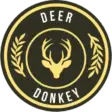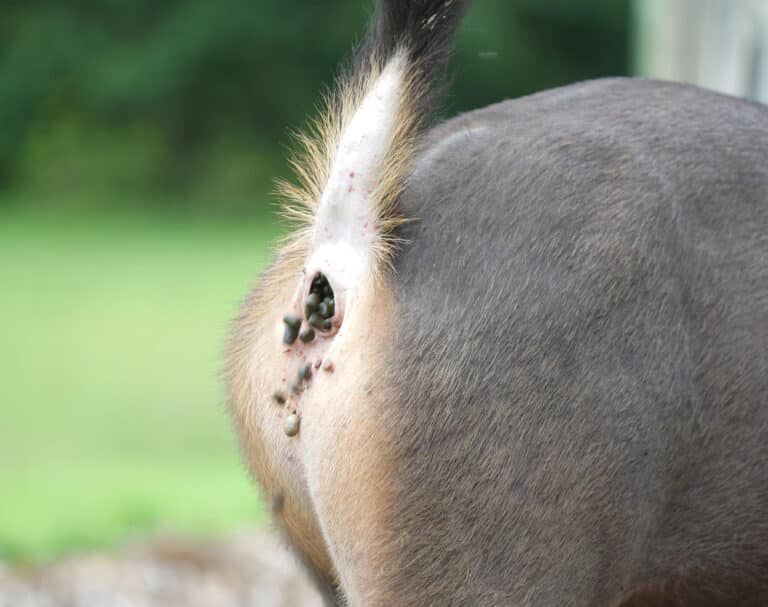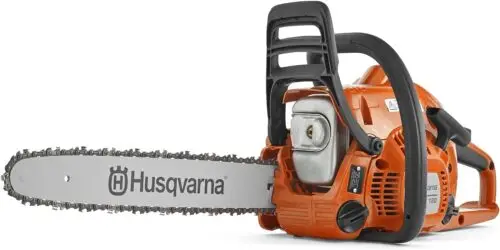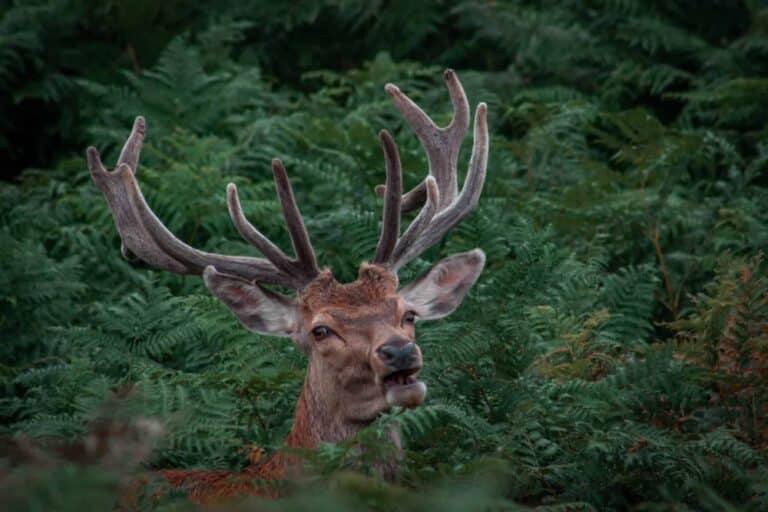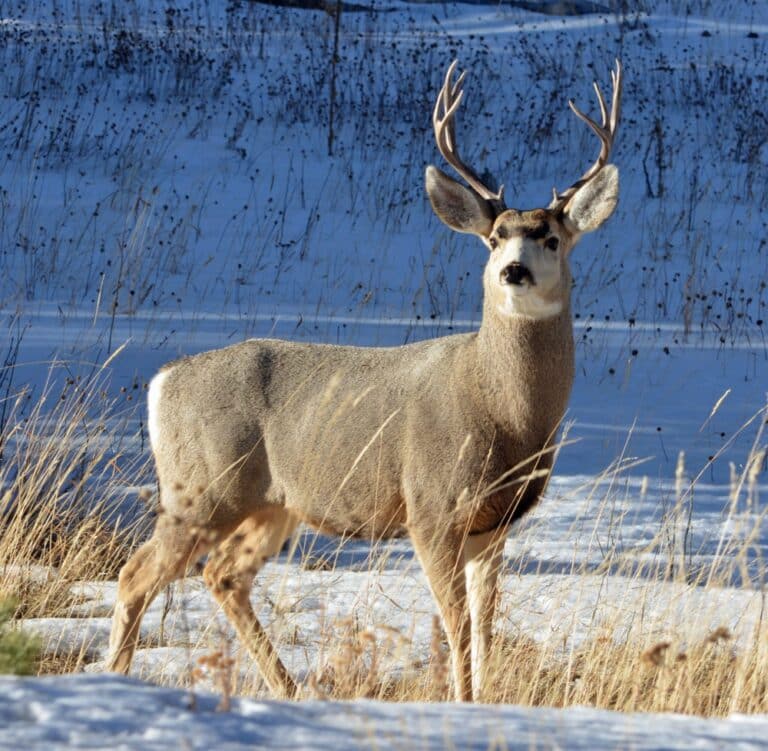Deer hunting is an art steeped in tradition and wisdom, passed down through generations. This blog post delves into the legacy of deer hunting, exploring essential topics such as field dressing techniques from experienced hunters and the importance of passing down this invaluable knowledge.
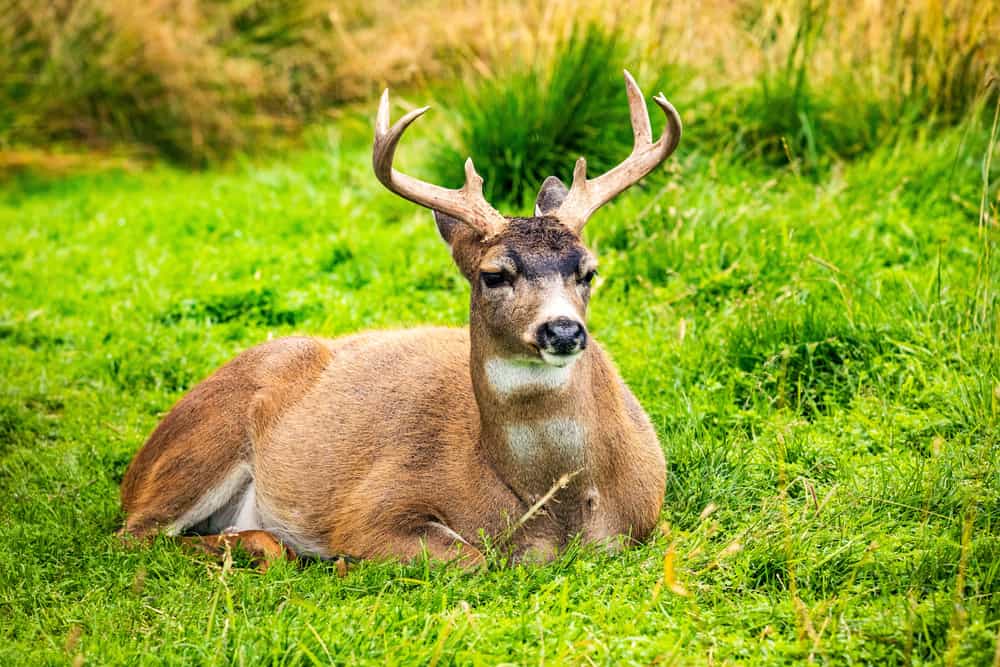
We will discuss the benefits of filming hunts for record-keeping and how video footage can aid in tracking your quarry. The controversy over antler restrictions and insights on what defines a true whitetail expert will be examined.
Nutrition plays a crucial role in attracting game; hence, we’ll explore strategies for creating compelling food plots for year-round attraction. We’ll also delve into diverse hunting landscapes and how to adapt tactics accordingly. Finally, we’ll touch upon media coverage of giant buck sightings and setting personal goals versus body count achievements in deer hunting.
Legacy of Deer Hunting
Passing on the long-held customs of deer hunting has enabled a tradition to remain robust and relevant in modern times. This pursuit is not just about the hunt but also encompasses invaluable knowledge, like field dressing techniques shared by seasoned hunters.
The Importance of Passing Down Hunting Wisdom
Hunting wisdom is more than knowing how to aim and shoot; it is understanding animal behavior, tracking signs, and respecting nature. Many experienced hunters pass their expert tips to younger generations, ensuring this ancient tradition remains alive.
Field Dressing Techniques from Experienced Hunters
- Bleeding: The first step in field dressing a deer involves bleeding out the animal. This helps preserve the meat quality while preventing spoilage.
- Gutting: After bleeding the deer, you must carefully remove its internal organs without rupturing them, which could taint the meat with harmful bacteria.
- Skinning: Skinning involves removing the hide from the carcass. Doing this quickly is vital before rigor mortis sets in for easier removal.
Gaining expertise in these methods requires practice and dedication, yet taking advice from experienced hunters can shorten the learning curve. Websites like Hunter Ed Blog offer detailed guides on approaching each stage of field dressing a deer based on years of collective experience among their community members.
Remember that every hunt shapes our hunting legacies – ones built upon respect for wildlife conservation efforts and personal growth development within the sports realm.
Filming Hunts for Record-Keeping
Documenting your hunting experiences is like capturing the wild on film. Wade Hendricks from Apex Outdoor Rewards knows the importance of filming hunts – not just for sentimental and practical purposes.
Benefits of Recording Your Hunts
Relive the thrill and excitement of each hunt by watching your action movie. Not just for fun; there’s much more to gain.
- Educational Tool: Learn from your mistakes or successes by reviewing footage. It’s like a hunting masterclass.
- Trophy Documentation: Video evidence shuts down any doubters. No more tall tales around the campfire.
- Hunting Journal: Your video records become a visual diary showing changes in-game behavior and population trends over time.
How Video Footage Can Aid In Tracking
Not only is filming hunts exciting, but it also helps you track deer movements. Regularly filmed areas reveal the secret paths deer use throughout the year. It’s like having a GPS for your hunting strategy.
Gather your gear and start shooting; it’s time to explore the wild. Happy hunting.
Controversy Over Antler Restrictions
The debate over antler restrictions has caused a rift in the hunting community, pitting friends and family members against each other. These regulations have stirred up debates within the hunting community, causing divisions among friends and families who once shared this passion.
Impact of State-Mandated Antler Restrictions
Many states have restricted antler size to promote healthy deer populations and ensure sustainable hunting practices. Some hunters appreciate these measures for conservation benefits, while others argue they infringe upon personal freedoms and hinder the true spirit of hunting.
This divide in opinion has led to heated discussions at local game clubs, online forums, and even family gatherings. Some believe that focusing too much on antler size diminishes what it means to be a skilled hunter. Maybe it’s time we measure hunting skills by the number of dad jokes told at the deer stand.
Defining a True Whitetail Deer Hunting Expert
The controversy over antler restrictions brings us back to an age-old question: What defines a true whitetail expert? Is it someone who consistently bags bucks with massive racks? Or is it someone who understands deer behavior intimately, can track them efficiently through various terrains, knows when to take ethical shots, respects wildlife laws, and contributes towards conservation efforts?
A growing number of hunters lean towards the latter definition. They emphasize that being able to hunt responsibly while respecting nature’s balance should be given more importance than just bagging big bucks. It’s not the magnitude of the antlers that counts, but rather the breadth of feeling behind the trigger pull.
Food Plots for Year-Round Attraction
Want to lure in deer all year long? Take notes from Todd Stittleberg, the food plot guru.
Strategies for Effective Food Plots
Todd’s secret? Give deer a buffet that satisfies their cravings throughout the seasons. Plant a variety of crops to keep them coming back for more.
- Fall/Winter: Serve up some carbs with grains like oats or wheat. It’s like comfort food for deer during the chilly months.
- Spring/Summer: Help deer grow strong with protein-packed legumes like clover or alfalfa. It’s like a muscle-building shake for them.
The Role Nutrition Plays In Attracting Game
Good nutrition is the key to attracting a game. Well-fed bucks will sport impressive antlers, making every hunter’s dream come true. And let’s not forget about the does – they need proper nutrition for successful reproduction, ensuring a thriving herd.
Food plots also keep deer from straying onto neighboring lands, where they might become someone else’s target. It’s like a VIP lounge that keeps them safe and sound.
Creating Gourmet Buffets For Deer
Are you looking to up your hunting game? Try serving gourmet buffets for deer. Expert hunter Steve Bartylla reveals how this clever strategy can attract more deer to your hunting grounds.
The Art Behind Creating Gourmet Buffets
Creating a deer buffet is easier than you think. Plant a variety of nutritious and enticing vegetation. Consider early spring food sources like clover or alfalfa to replenish deer after winter.
Don’t forget late summer and fall foods like oats, turnips, or radishes. These treats help deer prepare for the rutting season and winter.
For a diverse buffet, mix different plant species in one plot. This caters to different deer taste preferences and encourages frequent visits.
Timing is crucial. Research optimal planting schedules for your region or consult with local agricultural extension services. Purdue University Extension Service offers excellent resources on this topic.
Remember, creating gourmet buffets requires patience. But it’ll all be worth it once those big bucks show up at dinner time.

Adapting tactics according to diverse landscapes
In ag-heavy regions, deer tend to be scattered and harder to locate. You’ll need to be stealthier in smaller woodlots due to closer quarters. The dense vegetation and larger territories of the northern Michigan woods pose another challenge.
Even getting a shot at folkies (young bucks) can be challenging in these varied conditions. That’s why it’s helpful to learn from successful hunters who have experience in similar environments.
The key here is adaptability – adjusting your strategies based on local wildlife’s terrain and behavior patterns. Here are some tips:
- Analyze Your Environment: Understand how different terrains affect deer movement and adjust accordingly. Also, consider the entire season, noting that the views change monthly.
- Mimic Successful Hunters: Learn from those who have succeeded in similar environments by studying their techniques and adapting them as needed.
- Patient Observation: Spend time observing local wildlife behaviors before making any moves; this will give you valuable insights into optimal hunting times and locations within your specific landscape.
Observing the natural environment and grasping its effects on wildlife behavior is essential for successful hunting. By learning how different landscapes influence deer habits and adjusting our tactics accordingly, we increase our chances of bagging that trophy buck we’ve been dreaming about all season long.
In the wild world of deer hunting, media coverage is like a megaphone for sharing insights and news about those elusive giant buck sightings.
Setting Personal Goals vs. Body Count Achievements
Hunting is all about setting personal goals and not just obsessing over body count achievements. Your whitetail hunting lasts an entire season, and those deer tags don’t look good in your wallet.
Forget the numbers game. DeerDonkey.com wants you to soak up relatable, entertaining, and informative content. It’s about understanding those sneaky deer behavior patterns, honing your skills, and respecting Mother Nature’s delicate balance.
But wait, there’s more. DeerDonkey.com also hooks you with tips from seasoned hunters and reviews on must-have gear like Easton’s Generation II BowTruk roller bow case and the trusty Peet Shoe Dryer. These products will take your hunting game to the next level. Easton’s Generation II BowTruk roller bow case is durable, while the Peet Shoe Dryer keeps your boots cozy during those long pursuits.
So why all this emphasis on personal goals? Because DeerDonkey.com believes that hunting is about more than just numbers. It’s about building a community where hunters can share their experiences without judgment. It’s about embracing the true essence of the hunt itself.
FAQs About Deer Hunting
Why is it essential to hunt deer?
Hunting deer helps control their population, maintains ecological balance, and provides a source of healthy, organic meat. More information can be found in our article about the importance of hunting.
Why are deer hunting essential for the environment?
Deer hunting aids in preventing overpopulation, which could lead to environmental degradation due to overgrazing. Learn more from our detailed guide on how deer hunting benefits the environment.
What should I know about deer hunting?
Before going into the field, it would be best to understand laws & regulations, safety measures, hunter safety tips, practical strategies, and ethical considerations.
What sound does a deer make? Or What does a deer sound like?
Deer produce various sounds to communicate with each other and signal different situations. Some common deer sounds include:
Grunt: A low, guttural sound often used by bucks to attract and challenge other bucks during the rut.
Bleat: A high-pitched, nasal sound made by does and fawns. It can indicate distress, curiosity, or the presence of danger.
Snort: A sharp, blowing sound made by deer to alert others of potential danger. It’s often accompanied by stomping feet.
Wheeze: A hissing sound made by alarmed deer, signaling danger. It’s a more intense version of the snort.
Rattle: During the rut, bucks may use their antlers to make a rattling or clashing sound to intimidate rivals.
Mating Call: Bucks can emit a deep, groaning sound called a “roar” during the rut to attract does and assert dominance.
Footsteps: Deer walking through vegetation or on different terrains can create distinctive rustling or hoofbeat sounds.
These sounds help deer communicate with each other, express emotions, and navigate their environment.
Where do deer sleep?
Deer do not have a specific sleeping spot like humans do. Instead, they rest in various sheltered areas called “bedding sites.” These sites provide safety and protection from predators while allowing the deer to rest and conserve energy. Bedding sites can include:
Thick Vegetation: Deer often rest in dense vegetation, such as tall grasses, shrubs, and thickets. These areas offer cover and help conceal them from predators.
Wooded Areas: Forested areas with undergrowth provide ideal bedding sites. Deer can find shelter under trees and among the vegetation.
Brush Piles: Fallen trees, logs, and brush piles offer natural hiding places for deer to rest.
Rocky Outcrops: Rocky terrain and ledges can provide shelter and protection for deer.
Low Vegetation: Open areas with low vegetation, such as meadows, can also serve as bedding sites if they offer cover and concealment.
Edges: Deer may bed near the edges of fields, forests, or water bodies, where they can have a clear view of their surroundings.
Deer are crepuscular animals, meaning they are most active during the early morning and late afternoon. They often rest and bed down during the day and night. Choosing a safe bedding site is essential for survival, as it helps them avoid predators and conserve energy while not actively foraging.
Why do deer jump in front of cars?
Deer jumping in front of cars is a behavior that occurs due to a combination of factors:
Instinctual Behavior: Deer are naturally inclined to be alert and reactive to potential threats. When startled or frightened, their instinct is to flee quickly, sometimes leading them to run into the path of oncoming vehicles.
Movement and Speed: Deer have acute senses, particularly their hearing and sense of motion. When a vehicle approaches, the fast-moving, large object can trigger their instinct to run, often causing them to jump onto the road.
Roads as Travel Routes: Roads and highways can cut through deer habitats, disrupting their natural movement patterns. Deer might be attempting to cross from one side to the other and misjudge the speed of approaching vehicles.
Low Visibility: Deer are most active during dawn and dusk, which coincides with low light conditions. Reduced visibility for both deer and drivers increases the likelihood of collisions.
Breeding Season: During mating (rut), deer are more active and may be less cautious. Bucks chasing does, and the general increase in deer activity can lead to more deer near roads.
Habituation to Urban Areas: In some regions, deer have become habituated to human presence and urban environments. This can lead to deer entering areas with higher traffic density.
To reduce the risk of collisions with deer, drivers should be cautious in areas known for deer activity, especially during early morning and late afternoon hours. Slowing down and remaining attentive while driving through areas with deer-crossing signs can help drivers respond quickly to any deer that may suddenly appear on the road. Additionally, using high-beam headlights when driving at night can help improve visibility and give drivers more time to react to deer on or near the road.
How high can deer jump? Or How high can a deer jump?
Deer are impressive jumpers and can clear obstacles that are several feet high. The jumping ability of deer can vary depending on the species, age, fitness, and specific circumstances. Generally, white-tailed deer (Odocoileus virginianus) are known for their exceptional leaping ability. Adult white-tailed deer can jump vertically up to heights of around 8 to 10 feet and horizontally cover distances of up to 30 feet in a single leap.
It’s important to note that these figures are approximate and can vary. Deer use their jumping ability to escape predators, navigate rough terrain, and clear obstacles in their environment.
How much does a deer weigh? Or How much do deer weigh?
The weight of deer can vary significantly based on the species, age, sex, and geographic region. Here are the approximate weight ranges for some common deer species:
White-tailed Deer (Odocoileus virginianus):
- Adult Bucks: 130 to 300+ pounds (59 to 136+ kg)
- Adult Does: 90 to 200 pounds (41 to 91 kg)
Mule Deer (Odocoileus hemionus):
- Adult Bucks: 150 to 300+ pounds (68 to 136+ kg)
- Adult Does: 100 to 175 pounds (45 to 79 kg)
Elk (Cervus canadensis):
- Adult Bulls: 600 to 1,000+ pounds (272 to 454+ kg)
- Adult Cows: 400 to 600+ pounds (181 to 272+ kg)
Red Deer (Cervus elaphus):
- Adult Stags: 400 to 600+ pounds (181 to 272+ kg)
- Adult Hinds: 200 to 300+ pounds (91 to 136+ kg)
Roe Deer (Capreolus capreolus):
- Adult Bucks: 40 to 75 pounds (18 to 34 kg)
- Adult Does: 35 to 65 pounds (16 to 29 kg)
It’s important to remember that these weight ranges are general estimates and can vary due to location, diet, and genetics. Additionally, deer typically have different weights at different times of the year due to seasonal changes in food availability and the breeding season.
What is a group of deer called? Or What do you call a group of deer?
A group of deer is commonly referred to as a “herd.” A herd of deer can consist of various individuals, including bucks (males), does (females), and fawns (young deer). The size of a deer herd can vary based on factors such as the species of deer, habitat, and social dynamics within the group.
How fast can a deer run? Or How fast can deer run?
Deer are fast runners and can reach impressive speeds when fleeing from danger. The running speed of deer varies depending on the species and individual factors, but here are approximate top speeds for some common deer species:
White-tailed Deer (Odocoileus virginianus):
- White-tailed deer can reach 40 to 50 miles per hour (64 to 80 kilometers per hour) in short bursts.
Mule Deer (Odocoileus hemionus):
- Mule deer can also reach around 40 to 50 miles per hour (64 to 80 kilometers per hour) when running.
Elk (Cervus canadensis):
- Elk are larger animals, and their top speeds are typically around 25 to 45 miles per hour (40 to 72 kilometers per hour).
Remember that while deer can run quickly for short distances, they may not maintain their top speed over long distances. Their ability to zigzag and change direction rapidly helps them evade predators and threats in their natural environment.
Deer Hunting Conclusion
In this blog post, we explored the wild world of deer hunting – from passing down hunting wisdom to controversial antler restrictions creating gourmet buffets, and setting personal goals for success.
